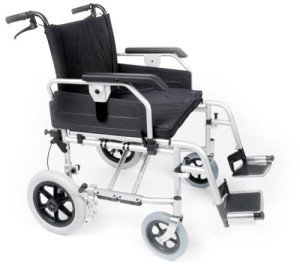14 Cartoons About Lightweight Bariatric Transport Wheelchair That'll Brighten Your Day

Bariatric Transport Wheelchair
Developed to be pressed by caregivers, transport chairs include smaller front wheels and larger rear wheels. They are a popular option for users with limited mobility who can not walk independently.
When searching for a lightweight bariatric transport wheelchair, think about the user's requirements and how they'll utilize the chair. Likewise, measure any entrances and other areas the chair will travel through.
Seating
Bariatric transport chairs include a large 22 to 36 inch large seating location that accommodates extra-large users. The chair seat is made from breathable nylon and features padded arms that can be gotten rid of and swing-away footrests. Unlike basic wheelchairs, which are ideal for average body weights, bariatric chairs have actually heavier frames constructed from reinforced materials and bigger rear wheels that make it easier to press them. Talk to a mobility professional to find out more about your alternatives and to identify which type of wheelchair is ideal for you. bariatric wheelchair are often covered by insurance service providers like Medi-Cal if your medical condition fulfills their protection requirements.
Frame
Bariatric transport wheelchairs utilize durable frames made of strengthened materials like steel and have broader seats than basic wheelchairs. They are created for individuals with greater body weights and can hold a maximum weight capacity of 700 pounds. They also have bigger rear wheels, which make them simpler for caretakers to press. Bariatric wheelchairs are often covered by insurance such as Medi-Cal, depending upon the client's particular medical requirements and diagnosis. Ask a health care professional or mobility professional to help select the ideal chair for your unique requirements.
Click here for more information. Medline Bariatric Transport Chair. Crimson Hammertone Frame.
Weight
While basic wheelchairs have lighter frames and smaller wheels, bariatric transport chairs include heavier-duty materials and a larger seat to accommodate users who weigh more than average. Since of their specialized style and construction, they tend to cost more than standard chairs. Nevertheless, some insurance coverage programs like Medicare and Medi-Cal might cover the cost of these chairs if the user fulfills the criteria for coverage. To read more about which chair is right for you, call a rehab professional today.
Wheels
Bariatric transport wheelchairs have bigger rear wheels than standard models, making them easier to press. They're often utilized in health centers and home settings, where the chair is pushed by caretakers. The extra-large rear wheels likewise allow the chairs to navigate a variety of terrain, consisting of outdoors.

Basic wheelchairs usually have smaller wheels, that make them more maneuverable indoors but less ideal for daily use on outdoor streets and other surface areas. Mobility specialists suggest speaking with a doctor or mobility expert to select the best wheelchair for your particular needs and objectives.
This durable, nylon reinforced steel transport chair supports patients approximately 500 pounds and features a large 22" seat, padded desk-length armrests, swing-away footrests and hand brakes. The 12-inch rear wheels ensure a smooth trip in any environment.
